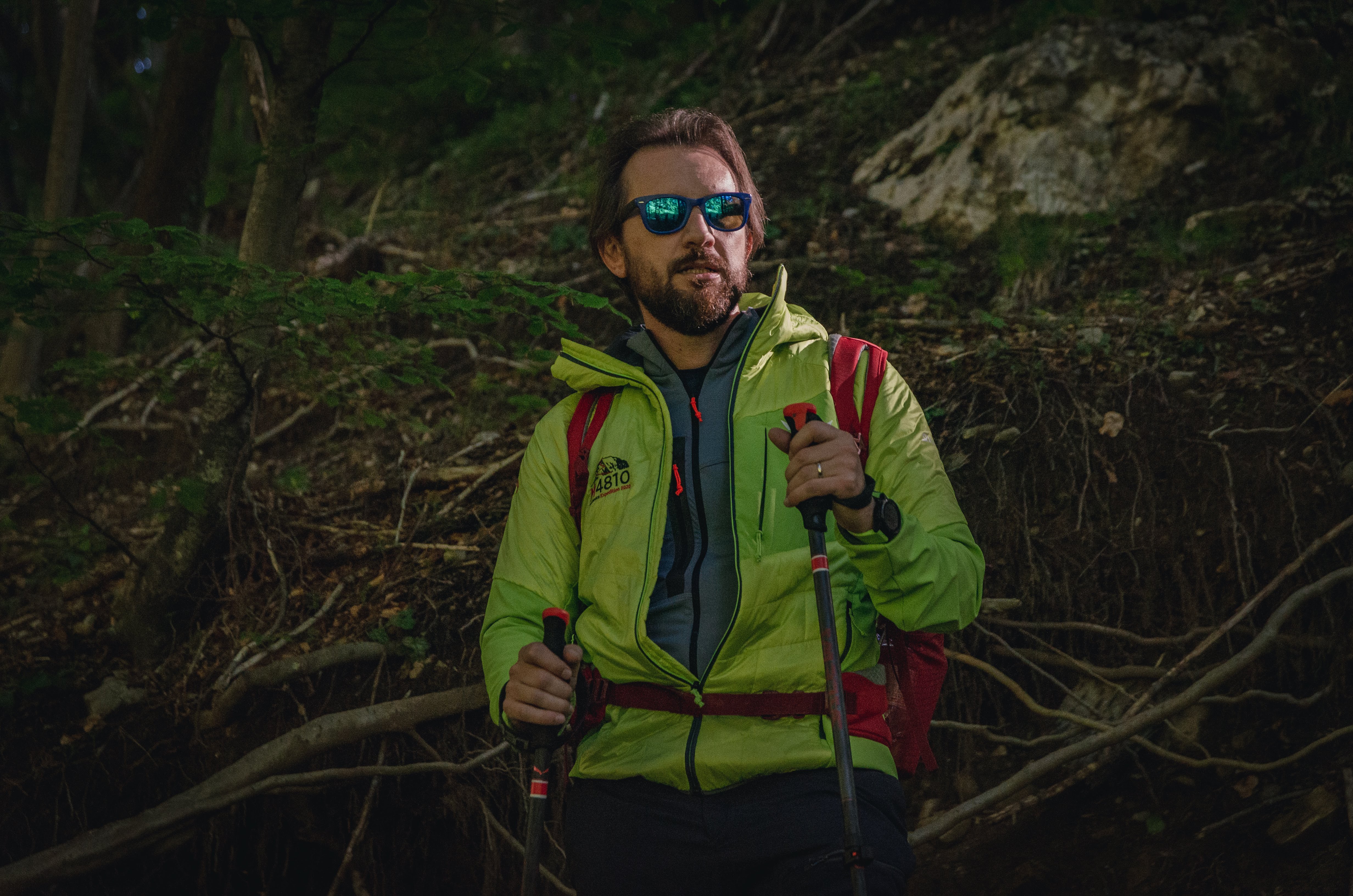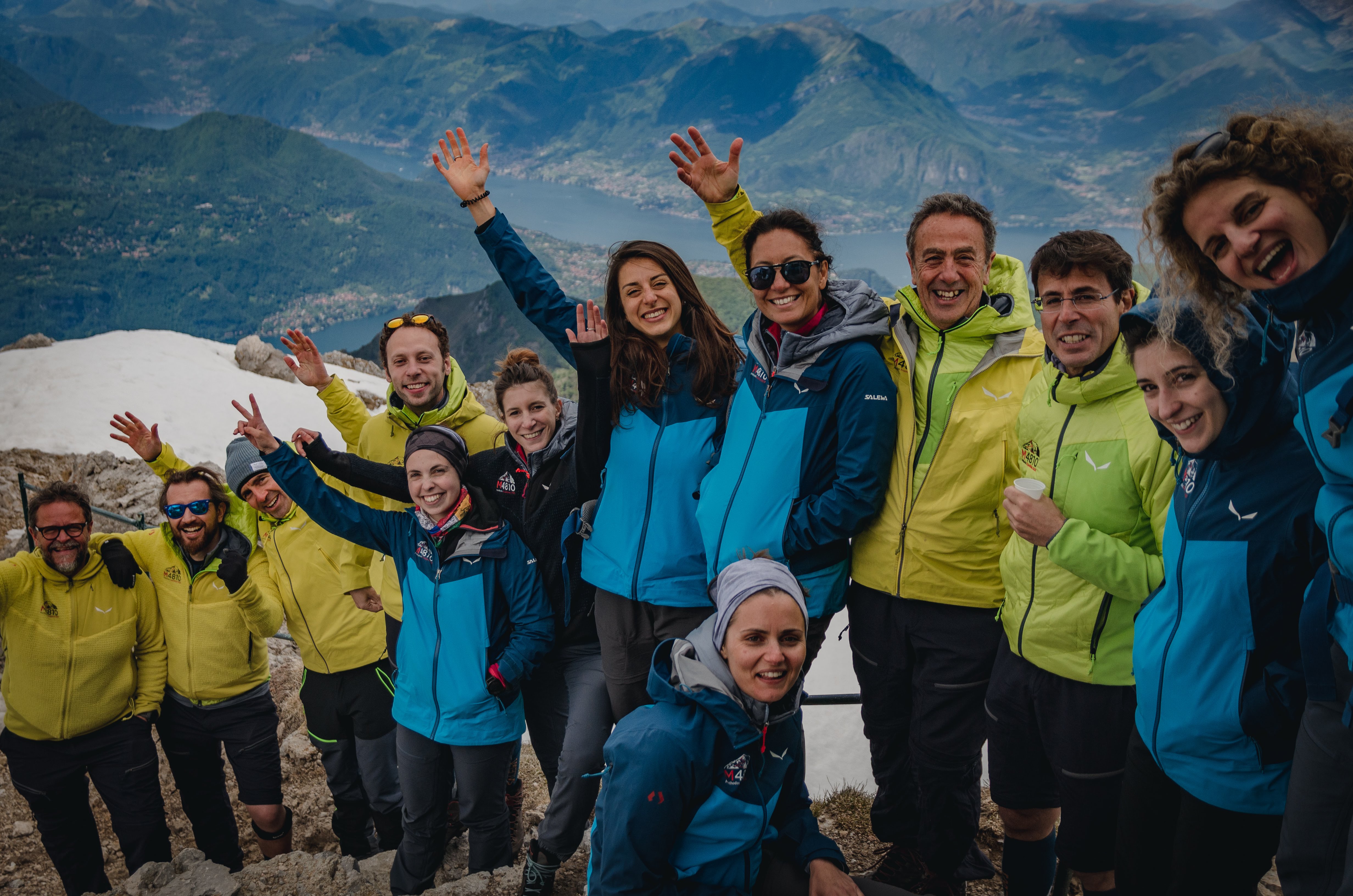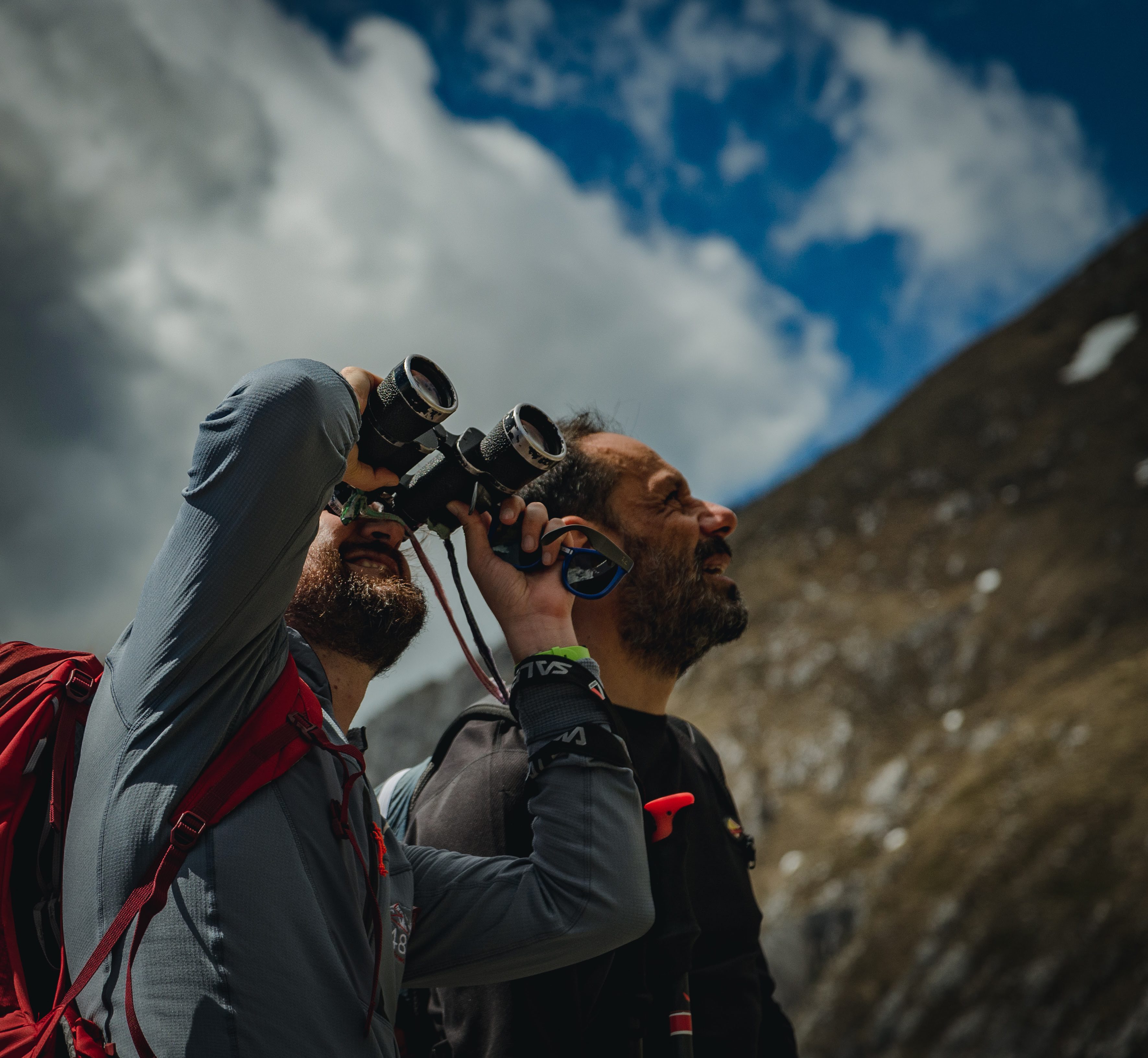
We’re not getting anywhere. It feels as if we’re on an imaginary treadmill that makes us walk and walk but gets us nowhere. We’re at about the halfway point on our way towards the Grigna, but it feels like we’ve climbed three mountains.
This will be remembered as the most difficult hike of all. Despite the low altitude, it will leave an impression on our awareness of some of our personal limits and will mark a watershed in the M4810 project.
But right now, I don’t know. None of us know yet. We’re limited to walking in silence.

Then the person in front of me stops, panting. It’s Alessio, the CEO of the Italian branch of Methodos, and - judging by the intense look on his face as he looks towards the peak – I get that it’s not the best time to ask how it’s going. Then, sighing, he says, more to himself than to me, “This may just be my Mont Blanc.”
Alessio is not an easy person to understand in relation to the M4810 project. It’s him that involved me in this crazy adventure, sharing its details with me the first time and telling me that an undertaking like this deserves its own voice.
It’s clear how passionate he is about the idea, but also how challenging it is for him. Starting from the first outings, his knee suffered, reminding him how much it would take to arrive to the end. Despite this, he hasn’t missed a single hike.
He has the determined attitude of a real mountaineer in search of the peak, but also of the manager who puts the wellbeing of his colleagues first. He speaks of the project with pride and deep analysis, sharing some pearls of wisdom, but at the same time doesn’t reveal his personal opinion on the mountains. And this makes me curious.

He starts walking again and we start talking. I think he’s probably hating me a little bit for adding on to the fatigue but in the end, we’re also distracting each other from it. To me, he seems to be one of the people that best understands the various dimensions of this project – even the less evident ones – and this makes it a pleasure talking about it with him. He’s able to open a small door in the back of your mind, leading you to things you’ve been doing without even realising.
“What I said before was an admittance of surprise, but not of surrender. I left for today’s trek with the wrong expectations, like many of us did. I expected an easy hike, a beautiful day - warm and sunny. The hard part for me is usually the descent, so I took off with confidence. In the end, I always made it up to the top, and maybe I started taking for granted my ability to do so. But when I lifted by head up to see the long way to go, I hesitated. I can do it, sure. The peak is up there, I can see it. But I can feel my power running low, my knee starting to hurt sooner than it normally would, and I ask myself: does it make sense to go up if I then won’t be able to get back down? If it’s a question of pacing myself, of recognising my limits, then I’ve found them today. I think the Grigna may be my Mont Blanc.”
While we talk about these things, the shelter - our first reference point - gets closer. The final destination, hut, is still far away, and I begin to think that only a few of us will reach the top this time. The ones that will make it will be those that are used to the mountains, like Martina, those for who the challenge of this project is more mental than it is physical. I lost Sabrina just a while back, Alessio sees the shelter as the final destination, Viki is whiter than the light snow that we’ve encountered, and fatigue is spreading among the group. I don’t think we’ll be taking the usual group photo at the top.
When we arrived at the shelter, a few of us raised their white flag. People start talking about how to organise the group, who will go back down and how, given that we’re not accompanied by guides this time. Over a sandwich, a sip of water, and a power bar, we prepare to divide the group.
But… but it doesn’t happen.
When it’s time to start walking again, there’s no one that still wants to go back down. Sabrina shows all her grit as the starts to walk again. Alessio looks at Viki and offers to go back down with her. I know - because of the conversation we shared - that a part of him also wants to go back, but that he’s torn because he wants to reach the peak.
But I understand that he would never leave Viki in a difficult situation, that he wouldn’t want her to force herself too much.
She hesitates, but then reassures him: she’s going to do it.
The group starts walking, and we’re there to close the line. The final part of the hike is harder than ever, and I sense in my colleagues that doubt of having made the wrong choice.
I see it in Viki as she looks more and more pale.
But above all, in Alessio, because I can see in his eyes the fear of not having properly understood her, of having in some way forced her. That famous limit that we’re always trying to overcome; what if at times we should respect it instead? What if the thin line between challenge and exertion was exactly that?
One step after the other, in the end we set foot on the metal platform that holds the hut. We did it… all of us! Against all odds. And now, we deserve our group photo.

But on our way down, again I find myself beside an Alessio that seems unsatisfied. I can see that something is eating away at him.
I assume it’s the knee pain, and I ask him how he feels. If he’s proud to have conquered his own Mont Blanc, in the end. And he starts to laugh.
“Conquered? I don’t know about that. Did I really do it? I’m asking myself. I’m not as sure about it as I would like to be. You know, if we continue evaluating the results of this project in terms of “I made it to the top or I didn’t”, maybe we’re really underestimating it. If it’s really “just” a question of climbing the Mont Blanc, then it will only be a real success for very few people. Many already know they won’t make it up there. We need to see this challenge in all of its many dimensions in order to make it belong to everyone.
There’s the dimension of personal and professional growth: the stimulus of Changeability, that brings you to quit smoking, start driving again, to do something good for yourself.
Then there’s that of awareness, both in the mountains and in its parallels with our every day work.
Feedback and continuous improvement, which makes us rethink everything at every outing and learn that change management is truly a universal practice.
And of course, there is an extremely important dimension of team challenge. Of abandoning the culture of the individual, rediscovering our colleagues and our collaboration with them. And this is why I don’t feel like I really reached the top today.
The big question is: where is the limit? Where is the point beyond which we choose to climb not because we want to, but because we feel that we need to?
I think that today that point for us was the shelter, but I only realised it later. When we got there, Viki clearly did not want to continue. She said yes, but it would have been enough to look beyond the fatigue, beyond the feeling of having to push ourselves out of the comfort zone, to see the truth: she did not want to overdo it because tomorrow she has an important work commitment, and she didn’t want to be too tired.
So, I ask myself, how can we see the limit? How do we decide if that limit, in that moment, should be respected or challenged? How do we make sure we don’t fall into the trap of thinking that we must go beyond it always and at all costs? Above all, how are we sure that we won’t hurt ourselves in trying to challenge our possibilities.
Today I’m asking myself all this. And if, as a hiker I’m proud of what I’ve accomplished, as a manager I’m asking myself if I did the right thing. Because - even here in the mountains - I’m first and foremost a manager. I’m responsible for other people. So, this, for me, is one of the most important dimensions of the M4810 challenge.
Just like in change management, the peak is our vision: it’s clear, within reach, and the path that we’ve chosen will surely bring us there. But to get there, we have to climb on the crest, to play with balance. We can’t fall to one side, towards unconditional optimism, because we’d risk under evaluating the difficulty and fall off the crest. We also can’t stay sheltered in a hyper realistic vision, because change doesn’t happen without trust in our possibilities.

So, I’m here, on this mental (and physical) crest, and, every time, I ask myself what the right balance is.”
I listen to him in silence, and immediately afterwards – for one reason or another – we part ways. So, I don’t have the possibility to tell him what I think – that there’s no better manager than one that puts their collaborators before themselves. One that would be much more satisfied in understanding a colleague that in arriving to the top.
This is the kind of manager that can really ask their team to do something that they’ve never done before – both in life and in business.





